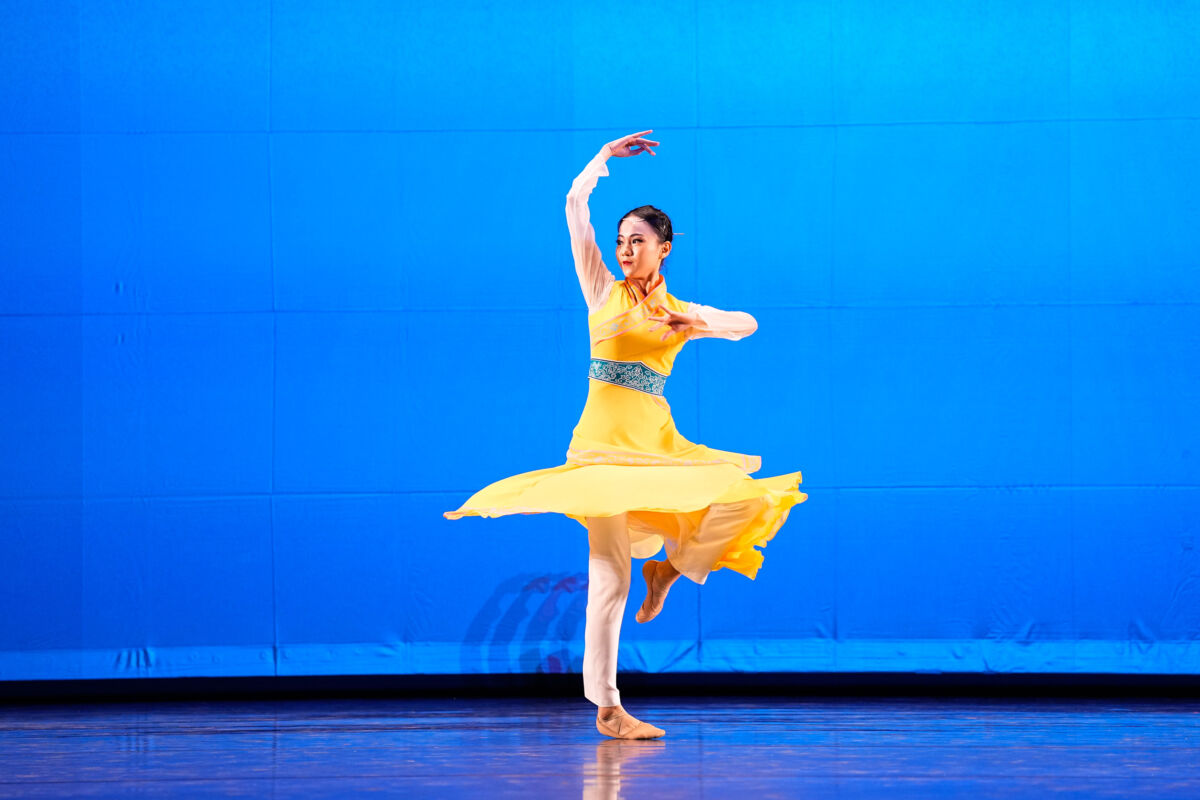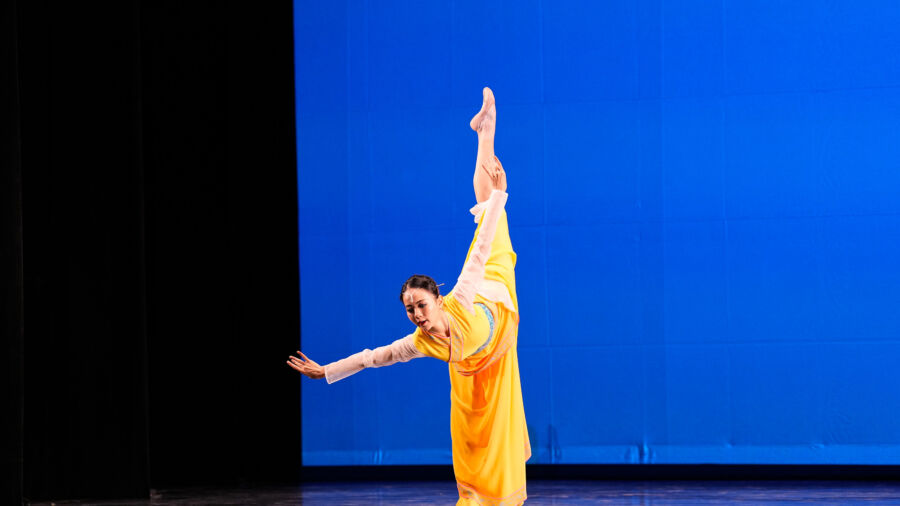Grace Huang changed the dance she was preparing for competition twice before she finally settled on “Fleeting Spring,” an original piece that depicts the feeling of a jaunt through the gardens.
Ms. Huang, a professional classical Chinese dancer with Shen Yun Performing Arts, participated in the female adult division at the 10th NTD International Classical Chinese Dance Competition in New York on Sept. 8, and placed in the semifinals.
“I finally settled on this about a month before the competition,” she explained. The previous two pieces she tried hadn’t been the best fit, and she sought to create a piece that better suited her personality.
Normally easily nervous, Ms. Huang said she was able to see the last-minute change as just another training opportunity. Learning to keep a calm heart in order to present the best of what she had learned and trained for was the biggest gain in competing, she said. She realized that if she kept a positive disposition, any nervousness naturally dissipated.
“Whether you’re learning a new piece, or choreographing an original one, this process affords you plenty of opportunities to improve,” she said. It’s why she joined the competition.
“I thought this would be a great opportunity to improve my skills and techniques, and deepen my understanding of dance,” she said. “The process of preparing for the competition affords you plenty of opportunities to uncover what you can improve, and also reveal what you do well and should bring out on stage.”

Ms. Huang explained that while the few minutes on stage represent the fruits of your labors, and dancers will of course, like her, try to find a piece that suits their personality, you have to leave your ego at the door.
“I think dance is an art that really emphasizes the artists’ inner character—the kind of person you normally are comes through in your art, and is conveyed to the audience,” she said.
A Deeper Performance
Ms. Huang saw Shen Yun once when she was young and thought it so beautiful that she set her heart on becoming a Shen Yun dancer when she grew up.
“I really didn’t think about anything else,” she said. “It felt like my life’s mission was to dance.”
She was fortunate to grow up in a household that loved the arts and traditional culture, she shared.
“I think all the arts are connected.” Calligraphy, for example, requires the same calm heart she needs on stage. The way Chinese characters need to be written, the direction of movement, and the way lines are connected, also have similarities to classical Chinese dance, she said.
“I like reading about traditional Chinese culture and ancient Chinese history, and I think it does benefit the art
if you understand the ancients better, and understand how they lived out [the five Confucian virtues of] benevolence, righteousness, propriety, wisdom, and fidelity, and how they faced or responded to challenges virtuously,” it can only deepen your performance, she explained.
“I most admire those who can persevere through challenges,” she said. “It’s not about whether they succeed or fail, your attitude is the most important thing … in any profession, you need to be able to overcome. If you fall, you get back up. No matter what, don’t let negative circumstances keep you down. Don’t focus on the goal at the expense of how you get there.”
As a Shen Yun dancer, Ms. Huang is gratified she is able to express the virtues of traditional culture through the arts.
“It’s so amazing that so many audiences respond to it, and the reason so many people love Shen Yun is because what we express is positive, that’s why they say we change hearts and minds,” she said.
From The Epoch Times

